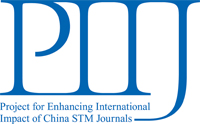Objective: To observe the protective effect of soybean isoflavones (SI) on the heart function of the rats with adriamycin-induced heart failure.Methods: Thirty adult male SD rats were divided into 5 groups: normal control (NC) group, adriamycin (ADR) group, L-SI group, M-SI group and H-SI group. SI of 30, 60, 120 mg·kg -1·d -1was orally administered through a stomach tube once a day for 6 days in L-SI group, M-SI group and H-SI group, respectively. The other two groups were given the same amount of normal saline the same way. Then ADR of 10 mg/kg was given intraperitoneally once to copy the model of heart-failure. The MedLab-U/4c biological signal collecting system was used to record and analyze the LVSP of the rats. The pathological changes of the cardiomyocytes were observed. Results: As compared with NC group, the LVSP, ±dp/dtmax, Vpm of the ADR group were significantly lower (P<0.05 or P<0.01), but those of the H-SI group were markedly higher than those of the ADR group (P<0.01). Electron microscopic morphometry of the heart samples of the rats in ADR group revealed typical alterations, consisting an increase of collagen content, vacuolation, diminishing of the cardiomyocyte diameter, alteration of myofilaments and Z-lines of myofibers, and myofibrillar degeneration. SI of 120 mg·kg -1·d -1treatment could prevent the loss of myofibrillae and the reduction of myocyte diameter, and the degeneration of myofilaments and Z-lines were reversed by SI. Conclusion: SI of 120 mg·kg -1·d -1 treatment can relieve the toxic effect of ADR on myocardium, and also obviously improve the cardiac contractility of heart-failure rats.
 Table of Content
Table of Content














